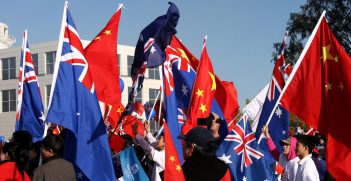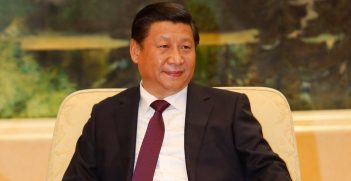How do Australian Scholarships Achieve their Intended Outcomes?

Higher education scholarships for international students are an important aspect of Australian foreign policy. While these scholarships help to develop a positive image of Australia, it is unclear whether the full benefit is being reaped.
International scholarships have become a pillar of Australian foreign policy in recent years. The expectation is that they may deliver developmental, diplomatic and even trade dividends, serving as a hook to attract fee-paying students. In spite of the investment in international scholarships, with AU$360 million budgeted for 4322 students in 2014–15, much too little is known about how and under what circumstances scholarship programmes achieve these intended and potential outcomes. In order to begin to chart what these connections between scholarship programmes and outcomes may look like, a study was conducted among individuals in Kenya, Uganda and Mozambique who were awarded Australian government scholarships and had returned home after completing masters-level studies in Australian universities.
In the analysis of quantitative and qualitative data obtained from these returned scholars (from 102 surveys and 31 in-depth interviews, respectively), several points in the scholarship process were identified which appeared to be crucial for achieving the intended and potential outcomes of the scholarship programme. First is the point at which potential students decide to apply for the scholarships. The manner in which the scholarships were advertised and the mode of application had a bearing on who was more likely to apply. For example, as adverts were online and targeted at residents of capital cities, rural dwellers had limited access to information about the scholarships. The online application process also made it easier for people with access to a computer and a fast internet service, while those in rural communities struggled.
This is one area in which the outcomes may be in competition with one another. The trade dividends from potential African students who can afford to study in Australia as fee-paying students are more likely to be reaped among the urban-dwelling elite. But the focus of development efforts is often on rural communities; to ensure development scholarship opportunities, these need to be made available to people in both rural and urban dwellers, and to both the rich and the poor. However, if the favoured model of development is top-down, then the urban-dwelling elite should perhaps be favoured, as they more likely to be in a position of influence to implement reforms. In addition, if scholarships are seen as a soft-power diplomatic tool, then focusing on the training of the elite (or their children) is perhaps appropriate.
The study participants overwhelmingly had positive views of Australia, despite the fact that Australia was not the first preference for the majority of them; most applied concurrently to universities in Europe and the USA. But having had the opportunity to get to know Australia, returnee scholars influenced others to choose to study there, as scholarship and even as fee-paying candidates. Due to the nepotism in their home country, a positive perception of Australia was formed from the outset, with the scholarship selection process seen as being fair, straightforward, clear, competitive and based on merit. Participants also saw the provision of scholarships as a fair form of development aid. Their perception was that, due to corruption, their government would not have used the funds more effectively.
On returning home, the majority of participants were promoted, with increased salary or responsibility. They were able to compete favourably in the job market due to their degree and experience in Australia. Many felt that the scholarship had changed their personal life and career path. But, prior to studying in Australia, some of the participants already had senior-level positions or were already on track to attain one, and were uncertain about whether or to what extent the scholarship had got them to where they were. Indeed, this is one of the challenges of evaluating scholarship programmes: the problem of the counterfactual – what would have occurred to these individuals and their careers if they had not secured the scholarship?
Nonetheless, employers were generally supportive of scholarship applicants. Participants who worked for the government did not have to quit their job, they took leave. Those who worked in the private sectors were not guaranteed a job on return, but their employers were still supportive. The majority of participants returned to their pre-scholarship employer. Moreover, the nature of the employer had a bearing on the extent and scope of the developmental impact of the individual returnee scholars, which ranged from community to national accomplishments. Some were well placed within national governments to make changes more directly or on a larger scale. But for most, influence within organisations occurred more slowly and required a critical mass of like-minded people, which they often found lacking.
The participants expressed a need to strengthen formal networks among alumni – most of them have kept in weekly or monthly contact with other scholarship recipients from their country of origin, sometimes through social media. The alumni networks provide a forum to share experiences, and they have been used as a way to find employment and opportunities to influence development. However, very few were in regular contact with their lecturers back in Australia. While many considered ongoing relations with their university as being necessary for continued knowledge exchange, many had lost touch with their lecturers and felt disconnected from their Alma Mater because their email account and the electronic library had been cut off. Maintaining relations with scholarship alumni is perhaps necessary to foster diplomatic influence, especially as alumni are in a position to take on leadership roles within the government of their country.
In all, one thing that did not emerge from analysis is a clear idea of the Australian Government’s theory of change in providing these scholarships, and how the different potential outcomes (development, diplomacy and trade) are being prioritised in the implementation process. For example, a commitment to development and diplomatic influence may be reflected in ongoing support for networking and for developing skills in leadership in order to further prepare alumni for reforms in their country. A focus on change within key organisations may, for example, reflect in training teams instead of individuals, whether within their country or through an ongoing process of scholarship programmes for selected staff of the organisation. This is being done by the Swedish government and the Wellcome Trust through PhD programmes in East Africa and by the Australian Government with the Zimbabwe Revenue Agency, albeit through short courses.
In future, and especially in the current climate of cuts to development aid by the Australian Government, it is important that there are well articulated strategies for international scholarships, including implementation strategies to facilitate intended outcomes. Furthermore, it is important that future studies continue to seek to better define how the different components of scholarship programmes and the different strategies deployed in implementation may influence scholarship outcomes.
Seye Abimbola is a lecturer in International Public Health at the University of Sydney and the Editor in Chief of BMJ Global Health. This piece is adapted from the article, “Australian higher education scholarships as tools for international development and diplomacy in Africa”, published in the Australian Journal of International Affairs.





